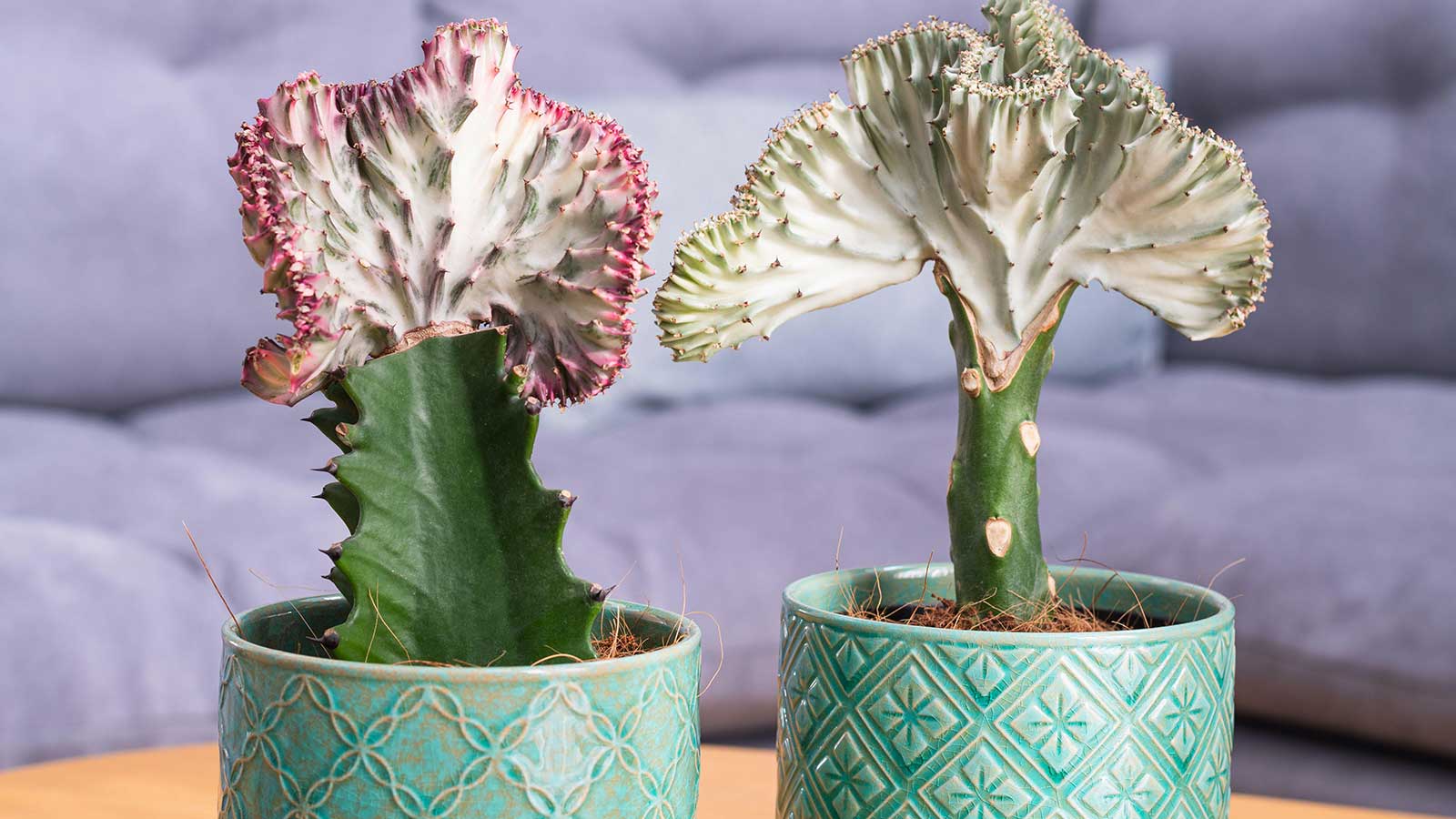
Q: I recently heard someone talking about a crested cactus and am intrigued. What are they, and how do you look after them?
A: These unusual specimens are a great addition to any indoor cactus collection. The term doesn’t refer to a specific variety, but rather a mutation (or type of damage to the growth points) that can occur to many varieties of cacti and succulents, explains Justin Hancock of Costa Farms. Kiersten Rankel, an expert from plant-care app Greg, says this mutation is called ‘fasciation’, and causes the plant's growing tip to fan out, creating a wavy, fan-like shape instead of the usual cylindrical or rounded growth.
‘Because it’s a difference in growth habit, most crested cacti don’t require different or specialized conditions than the species they came from,’ Justin says. But if you need some general guidelines, the tips below will help.
Provide the right growing environment
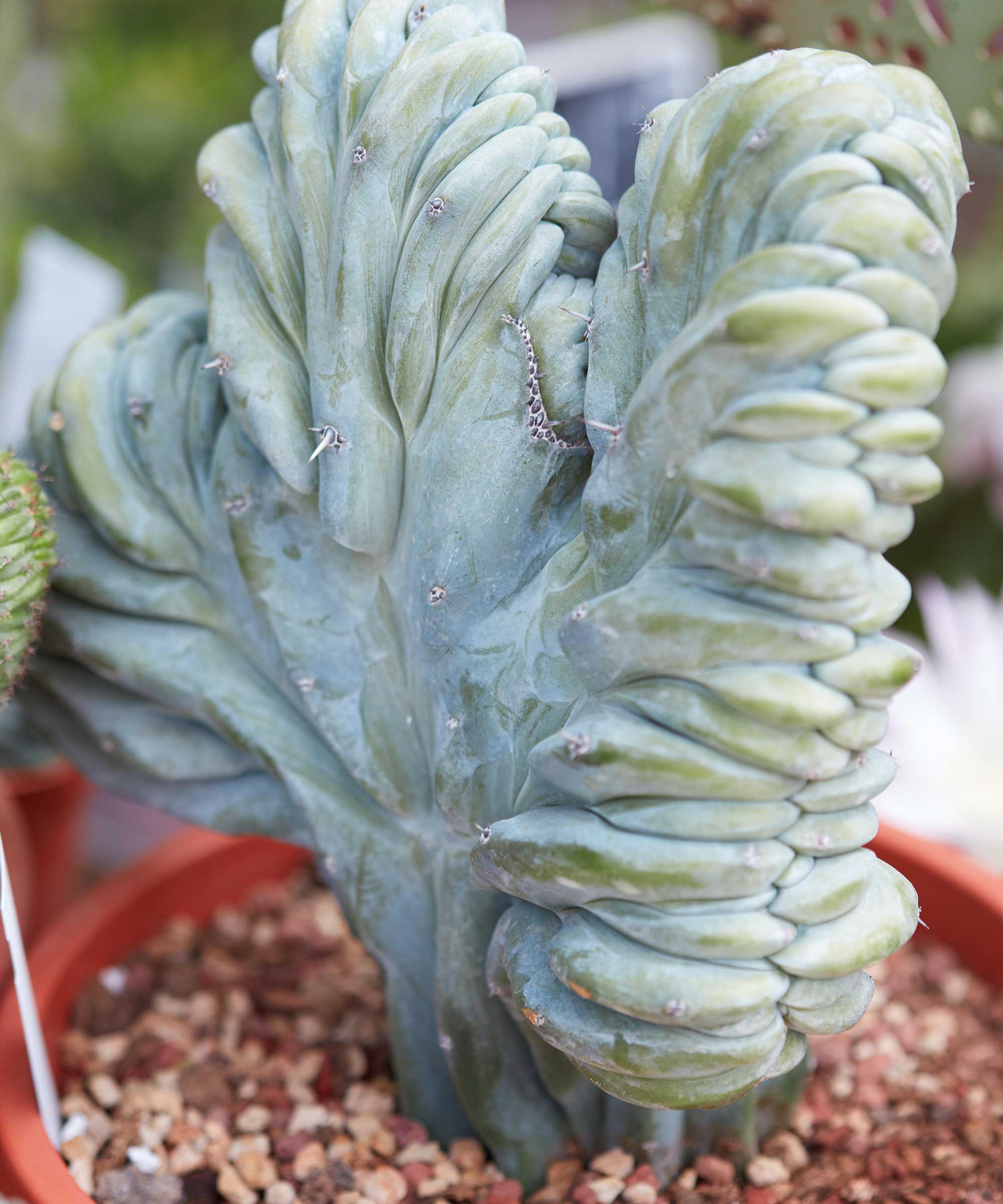
In general, provide bright light (the more light, the better), and average household relative humidity levels, advises Justin.
‘They prefer a stable temperature of 65-85°F, and should be kept safe from freezing temperatures,’ Kiersten adds. ‘A sunny windowsill is ideal.’
This highly-rated Bluetooth thermometer and humidity monitor from Govee at Amazon will help you keep the surroundings optimal.
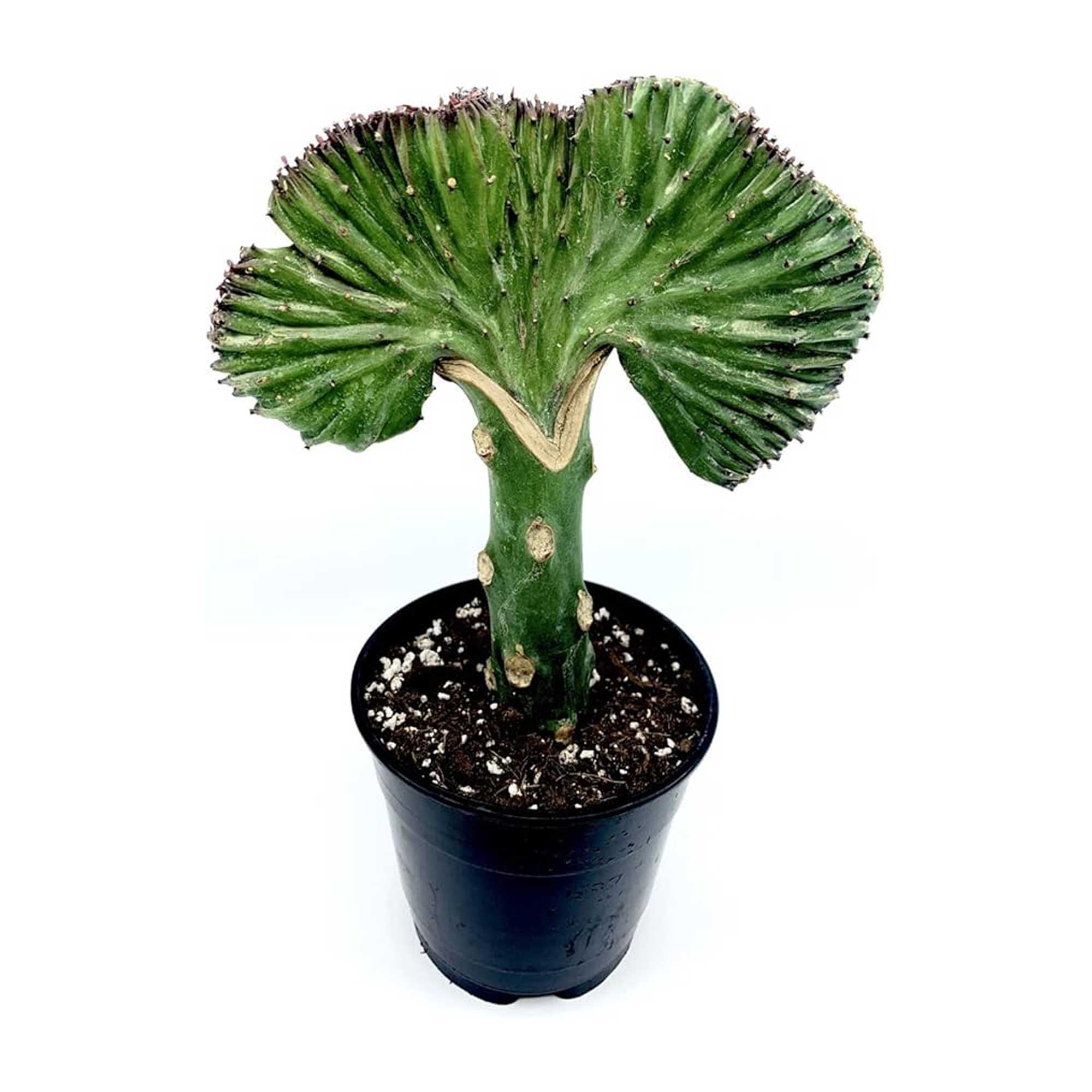
Add to your collection with this striking six-inch plant, shipped as a bare root from small business Succulent Addiction. Other crested varieties are available, too.
Avoid overwatering
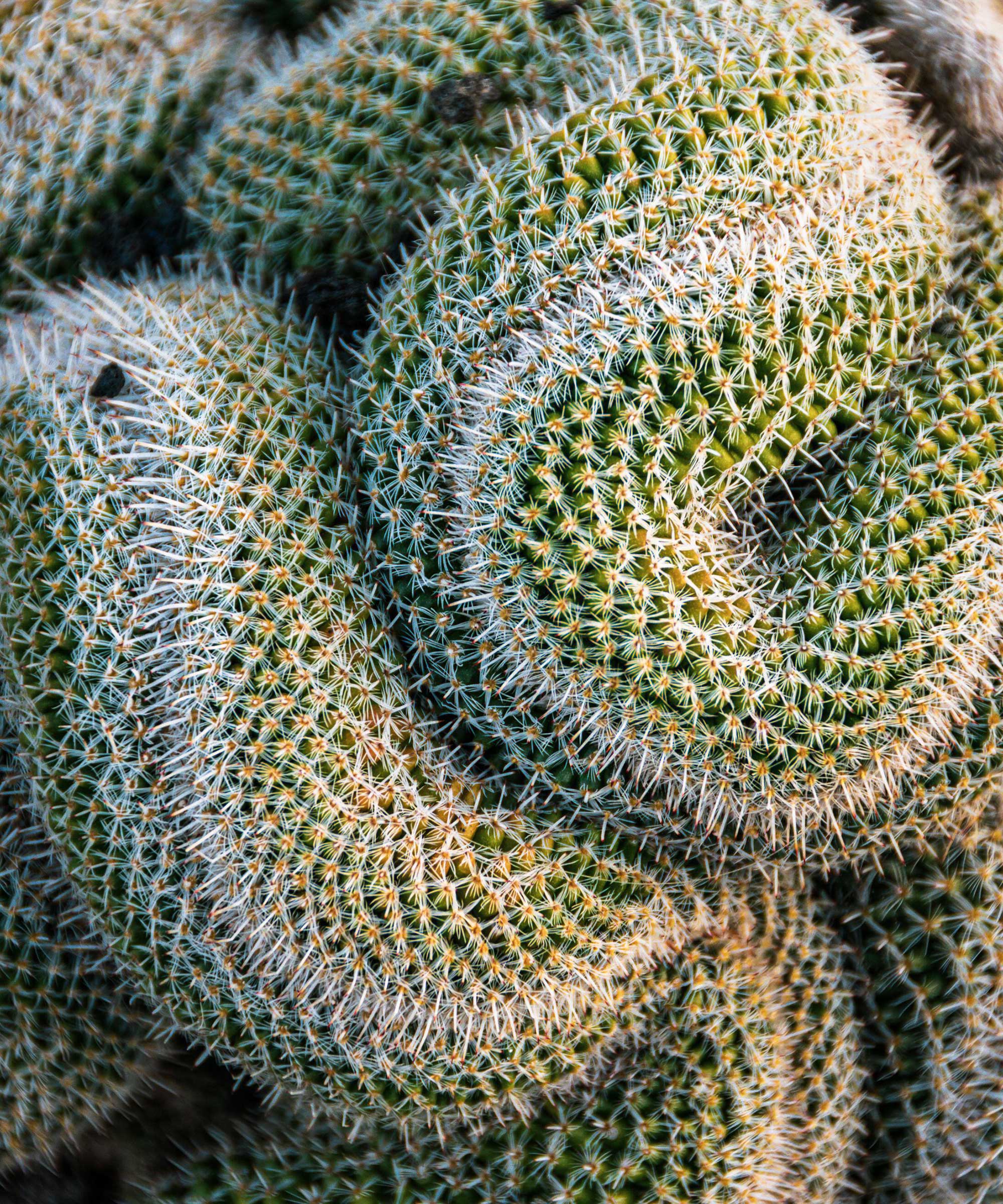
Knowing how to water a cactus is key if you want these plants to thrive. ‘Cacti tend to be low-water plants, depending on the species, so you may want to water once every 10 to 20 days or so, depending on your conditions,’ says Justin. 'In brighter spots and if you fertilize, your plant will grow a little faster and want a bit more water than the same plant would if it were in lower light levels and not fertilized.'
He recommends inserting a wooden toothpick into a drainage hole of the pot, which will help monitor moisture levels. ‘Leave it there for a few seconds then slowly pull it out. If it’s clean, then your cactus is probably a little dry and could benefit from watering. If there’s enough moisture in the soil that bits of soil adhere to the toothpick, then it’s probably moist enough.’
Repot when rootbound
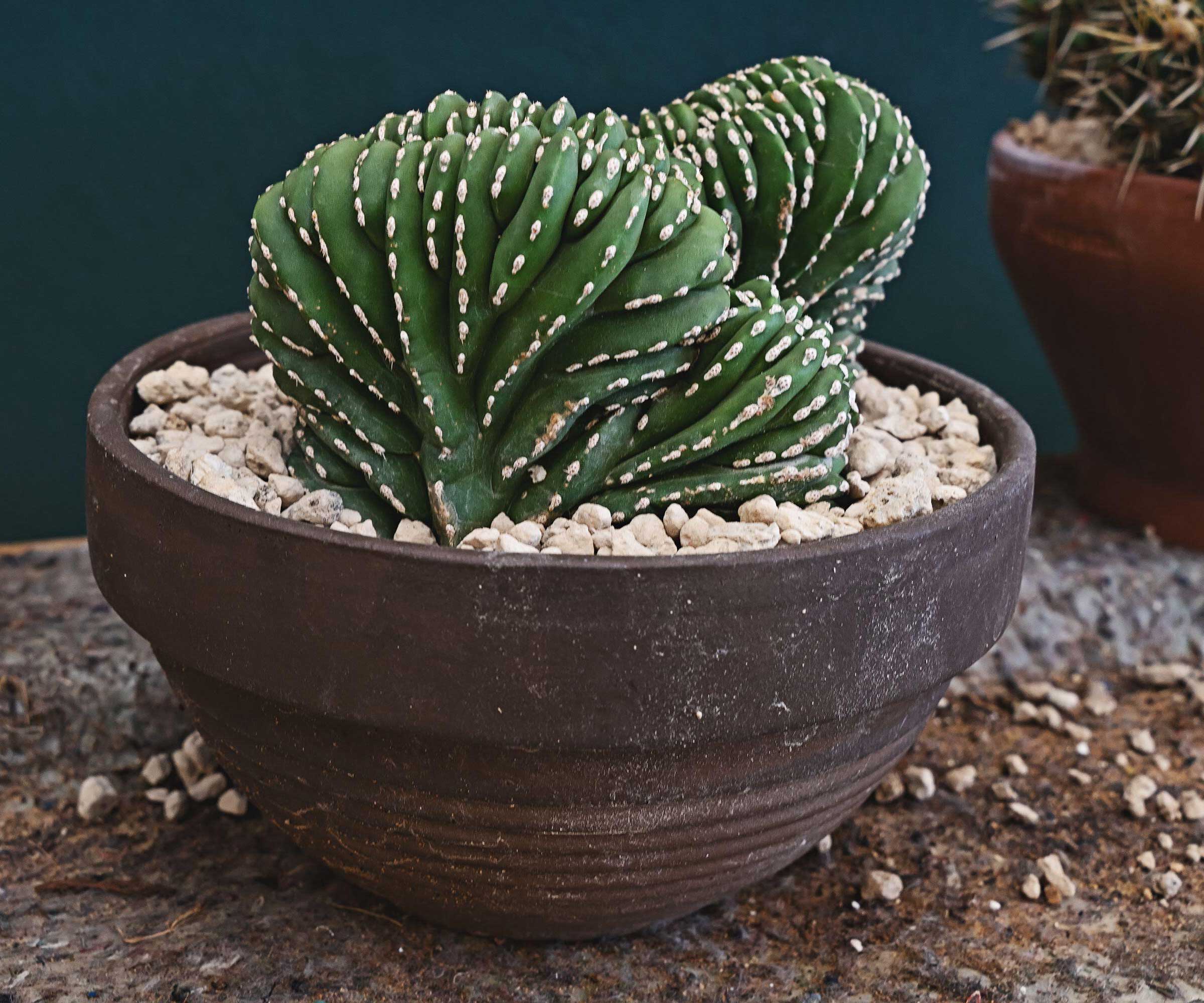
It’s generally a good idea to repot houseplants when they become rootbound. ‘Because cacti tend to have relatively small root systems, you may find it takes several years for the cactus to need repotting,’ says Justin.
When repotting your cactus, Justin suggests gently wrapping it in a towel or wearing thick leather gloves to protect your hands from the spines. Transfer it to a larger pot (‘it’s best to go one pot size up, so if your cactus is in a two-inch-diameter pot, go to a three-inch-diameter pot’), filled with a potting mix suitable for succulents and cacti.
‘The best time to repot is in spring, at the start of the growing season,’ adds Kiersten. ‘Allow the plant to acclimate for a few days before watering again.’
FAQs
What are some problems that can occur with crested cacti?
‘There don’t tend to be too many challenges specific to growing crested cacti varieties indoors – they’re generally the same challenges as other indoor cacti,’ says Justin.
‘Watch for pests – particularly mealybugs (which can appear like small, white, cottony bits on the plant), which can be treated with an insecticidal soap or insecticide.’
Overwatering is a common concern for indoor cacti, he adds, as is too little light.
What are some varieties of crested cactus?
According to Justin, many different cacti and succulents have crested forms. These include Cereus spegazzinii f. cristata, Echeveria pulvinata f. cristata, Euphorbia lactea f. cristata, Myrtillocactus geometrizans f. cristata, and Pachycereus marginatus f. cristata.
One common example is the brain cactus, Mammillaria elongata f. cristata, Justin adds. It grows in a unique shape often compared to a human brain, he says, but the regular form (Mammillaria elongata) looks more traditional, with finger-like growth.
Looking for more advice on indoor cacti? Our guide on how to grow cacti from cuttings will help you expand your collection for free.







